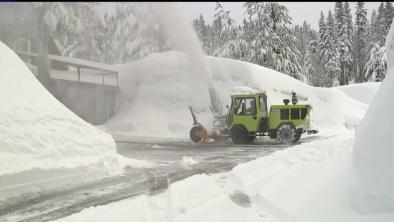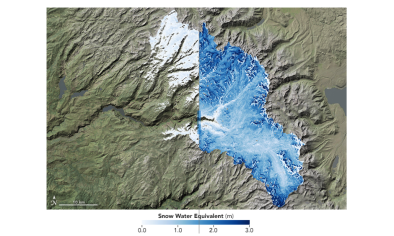Science Source
Near‐term acceleration of hydroclimatic change in the western U.S.
- States that the western United States presents a valuable case study for examining potential near-term changes in regional hydroclimate given its large population, vigorous and water-intensive agricultural industry, and important ecological resources
- Uses a high-resolution, hierarchical, five-member ensemble modeling experiment that includes a global climate model (Community Climate System Model), a regional climate model (RegCM), and a hydrological model (Variable Infiltration Capacity model
- Finds that increases in greenhouse forcing over the next three decades result in an acceleration of decreases in spring snowpack and a transition to a substantially more liquid-dominated water resources regime
- Finds that these hydroclimatic changes are associated with increases in cold-season days above freezing and decreases in the cold-season snow-to-precipitation ratio
- Finds that the changes in the temperature and precipitation regime in turn result in shifts toward earlier snowmelt, base flow, and runoff dates throughout the region, as well as reduced annual and warm-season snowmelt and runoff
- Finds that the simulated hydrologic response is dominated by changes in temperature, with the ensemble members exhibiting varying trends in cold-season precipitation over the next three decades but consistent negative trends in cold-season freeze days, cold-season snow-to-precipitation ratio, and 1 April snow water equivalent
Related Content
Headline

May 15, 2017 | The Weather Channel
With More Snow on the Way, Some Western Snowpack is Still at Record Mid-May Levels
Headline

May 5, 2017 | Los Angeles Times
Central California towns in trouble if Sierra snowpack melts too fast
Headline

Apr 30, 2017 | The Washington Times via Associated Press
Heat wave melting record snowpack in Northern California
Headline

Apr 26, 2017 | Climate Central
California Got More Snow This Winter Than Past 4 Total


